What Are Some Factors That Can Affect Your Pool Colour
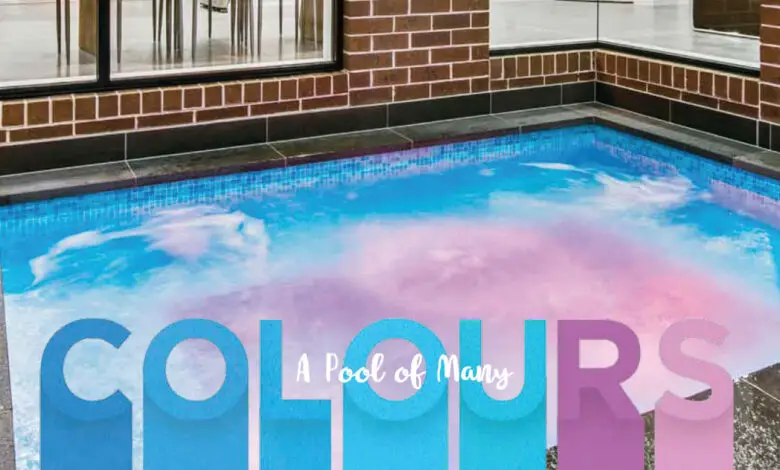
There are many decisions to be made when it comes to swimming pool finish, and this affects the colour of your pool, among many other factors. The colour of pool water is just an optical illusion. The colour perceived is the result of clear water bending the light entering your pool and reflecting it off the pool finish. There are, of course, many dyes that you can add to your swimming pool temporarily so that the entire pool water turns into the artificial colour of your preference.
How do pools get their colour?
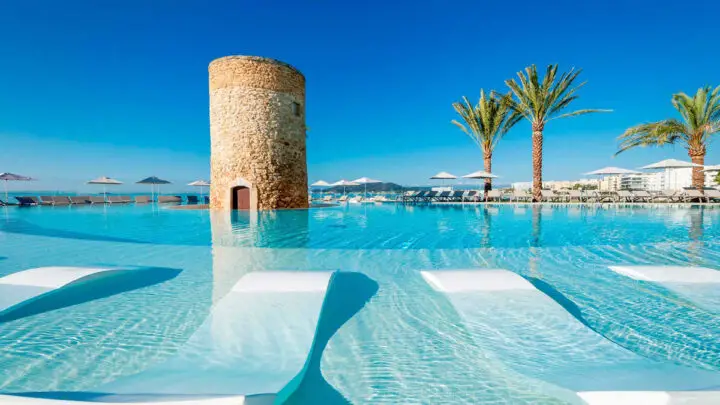
As already mentioned, the colour of swimming pool water is an optical illusion brought about by clear water bending the light entering the pool, which is then reflected off the pool finish. The two main factors that impact your pool colour are:
Sunlight
Broad-spectrum light like sunlight results in two things happening. A portion of the sunlight will bounce back while the rest of it will penetrate the water surface. Perceiving an object is actually a result of perceiving the portion of the light spectrum bouncing back from the object and hitting our eyes. We perceive the pool water to be shiny because this is the portion of the light that is reflecting from the pool’s surface. This reflection of sunlight is what makes us perceive the colour of the pool in a certain way.
Apart from the presence of sunlight, the angle and colour of sunlight also impact pool colour. On a clear day, direct sunlight will give full brightness to your pool. You’ll perceive a duller colour when the sun is low during the early or late day. Since water also reflects the sky above, your pool is likely to be dull if the sky is grey. Also, if your pool is generally in a shaded area some or all the time, you’ll see a duller colour. Don’t expect the same thing you saw online or in a catalogue because pictures are always taken under clear skies and ample sunlight. There’s no opportunity for a shadow to mess it up. Your real-life setting may be quite different, though.
Pool surface
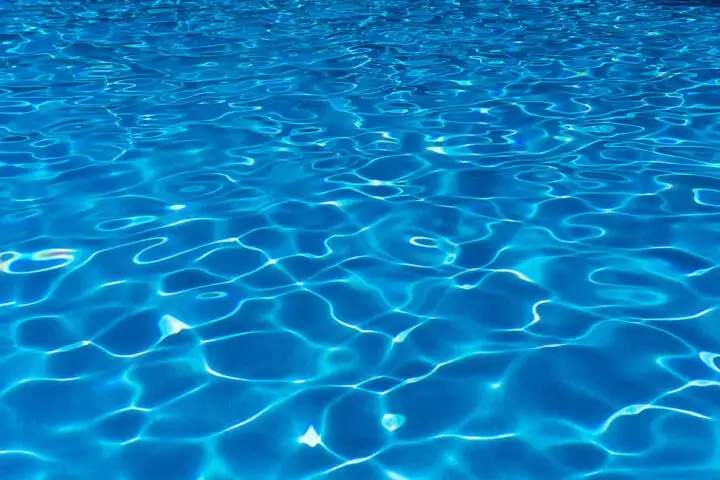
When you have clear water in your swimming pool, the nature of the pool finish found on the interior surface will impact the water colour you perceive. High-quality gel-coated fibreglass pools tend to be pigmented and in such cases, adding more water will not dull the pool shell colour.
Pool size & depth
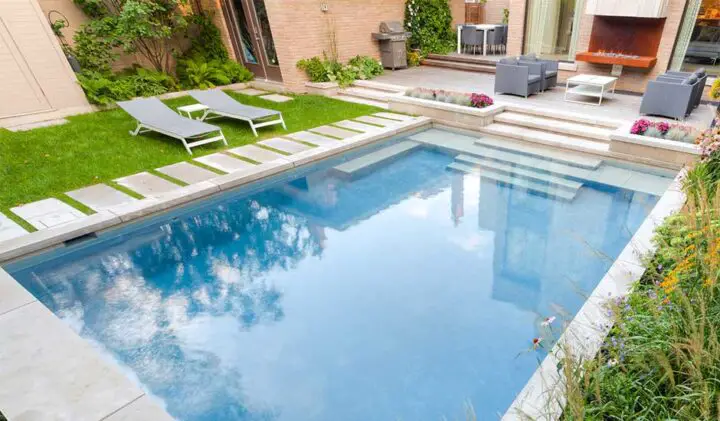
While water is clear, pool size and depth affect pool colour. Larger, deeper swimming pools will give you a darker, more vibrant hue than a small and shallow pool. Even shallow regions of deep pools will show lighter colours than the deep regions. Especially in regions such as ledges and steps, you’ll likely just see the finish. The best way to get a dark colour in a small pool is to make use of a dark, rich coloured finish. You won’t be able to make it look as dark as a deep pool though so be realistic about it.
Water balance in the pool
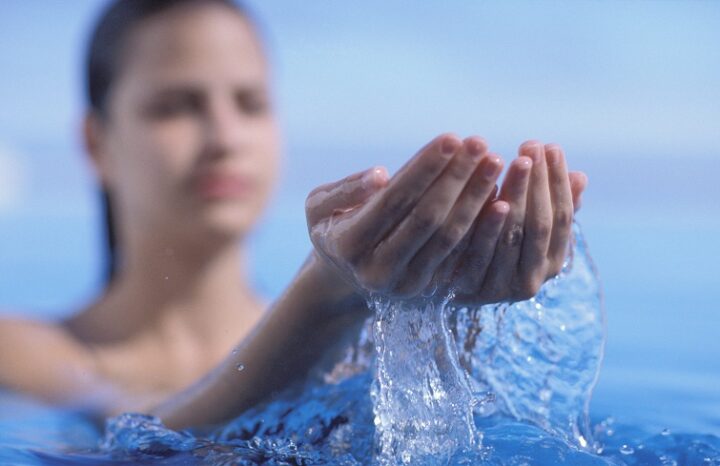
It’s very important to have clear water if you want to have reasonable control over the colour of your pool. Many times, the water in your swimming pool may appear green and murky simply because it has not been balanced properly. Algae and other contaminants tend to grow in unclean waters, making it appear dirty. You need to make sure there’s enough free chlorine in your pool to perform the necessary cleaning and disinfecting. You must also ensure that your swimming pool’s water circulation and filtration system is working properly. An excess of calcium, metals, and other minerals in your swimming pool water can also result in murky water and affect the colour of your swimming pool. Proper water balance through the use of a water circulation system is needed for this.
Reflection from surroundings
The colour perceived from your pool’s water is strongly impacted by the colour of the surrounding areas. A pool that is surrounded by a lot of greenery will reflect the green surroundings to appear greener. Such pools will appear brighter when darker colours surround the swimming pool. A swimming pool that is surrounded by lighter colours will also appear lighter due to reflection of the surrounding area.
Artificial colours
The biggest contributors to the colour of your swimming pool are sunlight and pool finish. It is, however, possible to make use of coloured dyes or even artificial lights fitted into the interiors of your pool to add colours of your preference to your pool. Such lights are available in multiple colours and even have shifting colours options so that you can make your swimming pool glow in any colour you choose. These can help you create some truly unique effects in your pool and set the mood for a party or any other occasion in your backyard. You can also use temporary colour dyes in your swimming pool to test the waters out if you’re planning to throw a themed pool party in your backyard.
Water movement
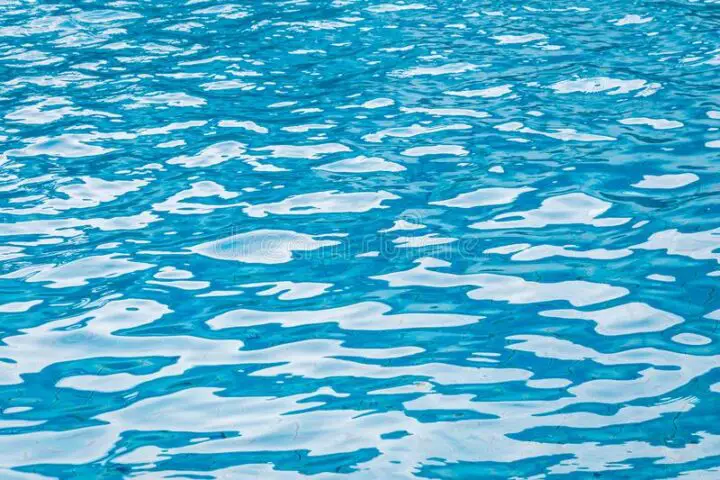
When the water in your swimming pool is forced to move either by wind or features such as water fountains, light prisms are created, which brighten the appearance of your pool. While this doesn’t change the water colour, it helps give it more depth and dimension.
Now that you know the factors that affect pool colour, here’s what you need to consider for the overall colour of your pool:
- Intensity and direction of natural light your swimming pool will receive
- The surrounding landscape’s colour scheme
- Pool depth
- Pool filtration and circulation system
- Features like fountains or waterfalls
There are so many variables that can have an effect on the eventual colour of your swimming pool. This is why it’s very important to consider several aspects of your pool beforehand so that you can ensure that you’ll get the pool colour you want. An understanding of all the above factors will make it easier for you to end up with the colour of your choice. To find out more information, get your answers from our experts at SwimmingPoolsBrisbane.

